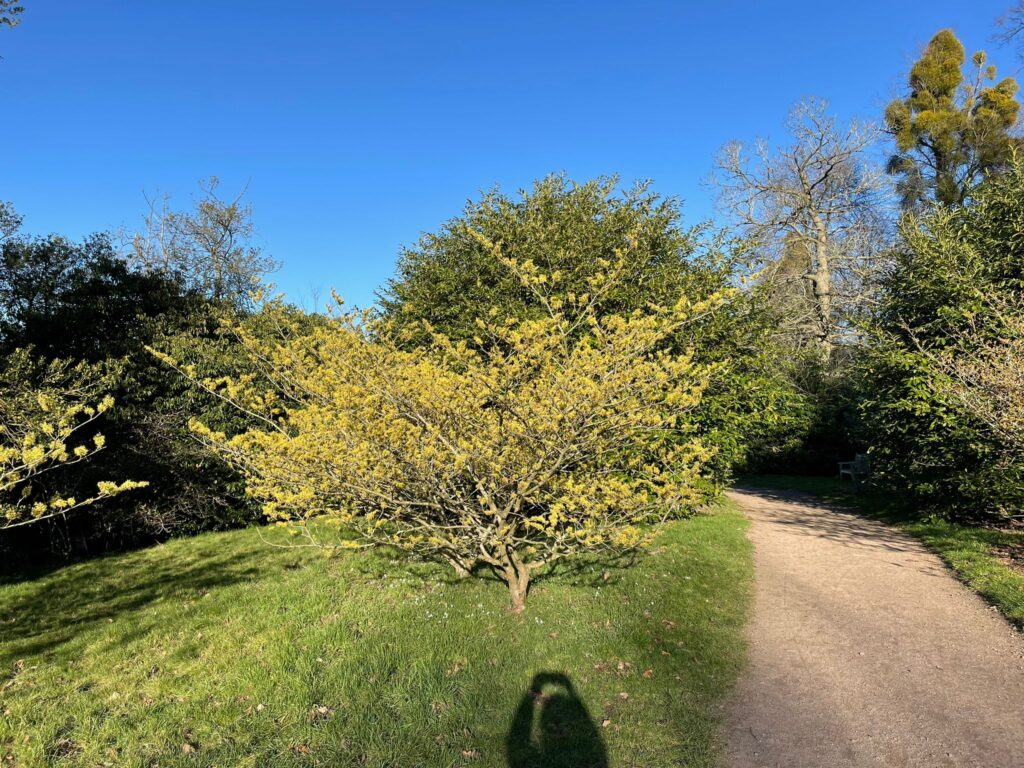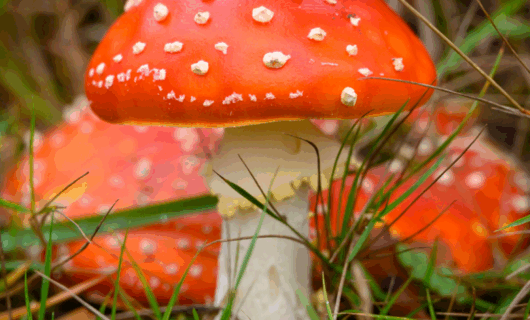All You Need to Know about Hamamelis
Hamamelis, or ‘Witch Hazel’ is one of the first flowers to appear each year at Markshall. Their striking fiery red and bright yellow flowers are welcome sight during the cold winter months and the Hamamelis is February’s plant of the month as chosen by the Arboretum and Horticulture Team at Markshall. Read on to find out about the Hamamelis found in the Arboretum.
Hamamelis, or ‘Witch Hazel’, is a hardy, deciduous shrub or small tree, native to North America, Japan and China. They are grown for their long display of winter flowers; perfect for adding colour and interest to any garden when little else is in flower. The striking fiery red, orange and yellow spidery flowers sit along bare stems after the autumn-coloured foliage has fallen, offering its spicy fragrance whenever you walk past.
There are 5 key species of Hamamelis, of which we grow three well-known varieties at Markshall Estate:
- Hamamelis mollis (Chinese Witch Hazel): one of the most fragrant of all the Witch Hazels, with an attractive ‘v’ shaped framework. Height x spread: 4m x 4m
- Hamamelis x intermedia ‘Diane’: this one has unusual, copper-red flowers with a light scent. The leaves turn a dramatic shade of yellow in winter. Height x spread: 4m x 4m
- Hamamelis x intermedia ‘Pallida’: a popular variety with masses of yellow flowers in late winter and early spring, offering great autumn colour leaves in shades of yellow, orange and red. Height x spread: 2.5m x 3m



The 5 Key Species:
- Hamamelis japonica – Japanese Witch Hazel
- Hamamelis mollis – Chinese Witch Hazel
- Hamamelis x intermedia – hybrid cross between H. japonica and H. mollis
- Hamamelis vernalis – Vernal Witch Hazel
- Hamamelis virginiana – Common Witch Hazel

During springtime at Markshall, visitors can wander through our Hamamelis grove, taking in their glorious display and delicious scent as they stroll alongside the middle lake towards the Millennium Winter Walk. Here along the eastern shore, the Witch Hazel appreciate their sunny location, sheltered from the prevailing wind by an evergreen backdrop of Laurel, Juniper and Mahonia. Ideally, Witch Hazels prefer slightly acidic soil, but they cope in our neutral soil which has been improved over time with organic material.
These attractive shrubs with arching stems can reach a height and spread between 3-4m, making them ideal to underplant. At Markshall, we have underplanted with a mixture of snowdrops and cyclamen for spring interest; leaving foxgloves and long feathery deer grass in summer to give them a more naturalistic feeling. In a garden setting, layer them with an underplanting of spring bulbs or Hellebores, for maximum dramatic effect. When most plants are still dormant, these architectural shrubs can add a spring-time jewel-effect to any garden.

Maintenance
Despite their appearance, these striking shrubs are easy to maintain. Remove any dead, crossing or diseased branches in early spring, once the flowers have finished, and apply a mulch of well-rotted compost or manure around the base of the plant.
Interesting facts
• Winter defence: during cold snaps the flower petals curl up and near close, to prevent damage from frost.
• Origins of the name: The common name, ‘Witch Hazel’ is unlikely to originate from the word ‘witch’, but possibly from the Old English word ‘wych’, which means ‘bend’. It is believed Witch Hazel sticks were used by Native Americans for detecting (or divining) water underground. Traditionally, Hazel (or Corylus) was used for locating underground water in Britain.
Benefits
As well as offering winter colour, being easy to maintain and with few known pests or diseases, there are other benefits to adding a Witch Hazel to your garden:
• Benefits to wildlife: Witch Hazel is a source of food for birds and other small mammals that eat its fruit capsules and seeds.
• Benefits to the environment: They are ideal for urban gardens; they can tolerate polluted city conditions more than most shrubs.
• Benefits to health: Witch Hazel has a long history of medicinal and cosmetic uses; the essential oils from leaves, bark, and twigs have been used as an astringent to treat irritated skin and inflamed tissue. Native Americans used the plant to treat the common cold, eye and liver conditions. Today, Witch Hazel is used in a variety of products, including ointments, soaps, and lotions.

We hope you have enjoyed reading all about the Hamamelis which can be found at Markshall. A special thank you to Emma, Horticulturalist, for creating this blog.
More from the blog
See more
-

Make the Most of Colour at Markshall
Autumn is the season when Markshall truly comes alive. As leaves turn golden, amber, and crimson, every corner of the […]
-

Updates from the Walled Garden in Spring
What can be discovered in the Walled Garden at Markshall this Spring? Our Walled Garden is home to a stunning […]
-

Commemorating the 80th Anniversary of Operation Varsity
What was Operation Varsity? Operation Varsity was the codename for the largest single airborne operation conducted on a single day […]